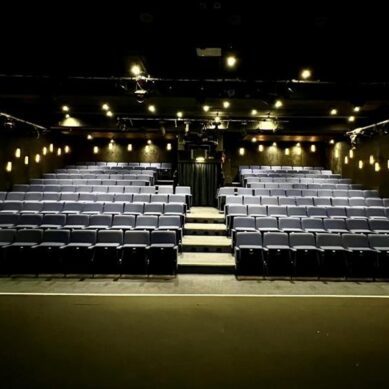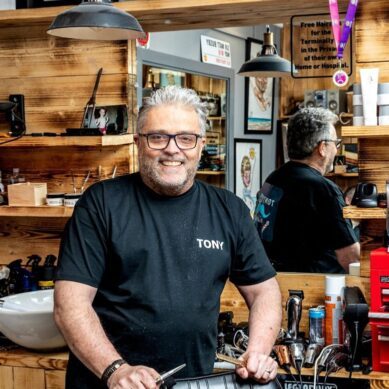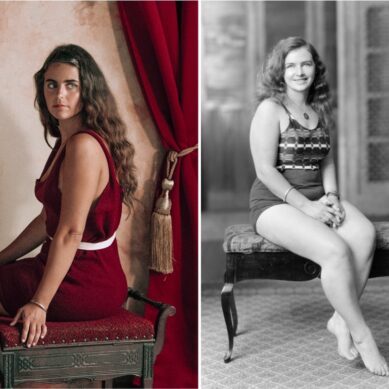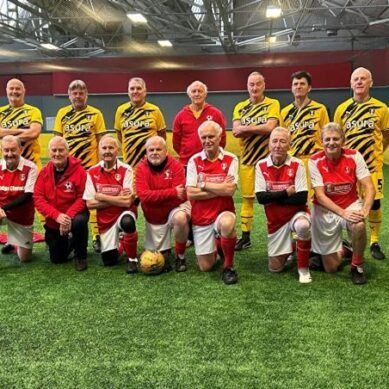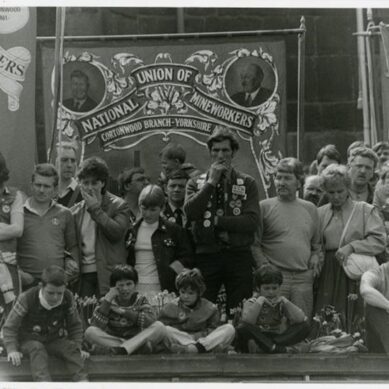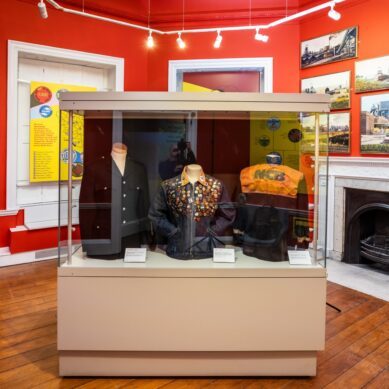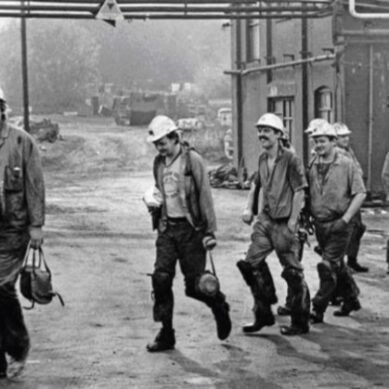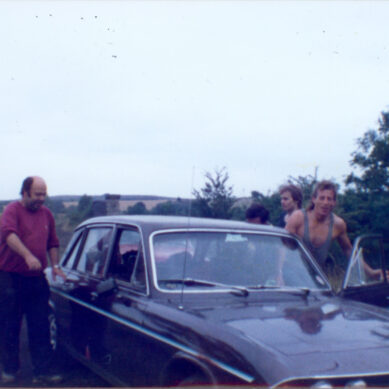When you think of Wimbledon, your mind probably jumps straight to strawberries and cream, the royal patronage, and its strict dress code. But what about its connection to Barnsley?
For over 50 years, workers at the Slazenger factory in Barnsley made the balls used at the prestigious tennis tournament that would be hit by the likes of Bjorn Borg, Billie Jean King, Martina Navratilova and Roy Laver.
The factory would become a major employer in the town, serving as an important part of Barnsley’s social history. Hundreds of people worked at the Doncaster Road factory during its heyday, helping ensure the tens of thousands of balls were all pitch perfect before they were shipped off to Wimbledon.
Lots of people will have a connection to the Slazenger factory, either as a former employee, having a relative who worked there, or ex-Kendray school pupils who remember having tennis balls thrown over the adjoining fence.
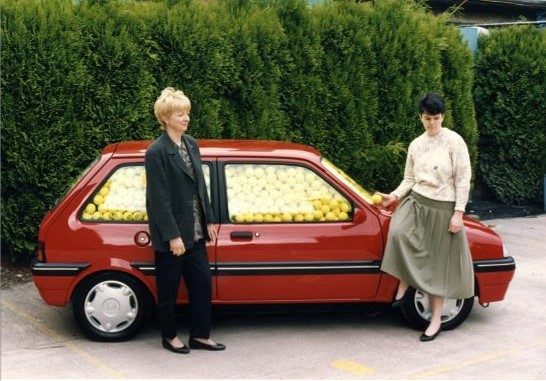
In recognition of its importance to Barnsley and the wider population, a new exhibition at Experience Barnsley is set to bring the former Slazenger employees centre-court. Barnsley Serves the World launches at the museum on Saturday 9th April and will run for six months until October. The retro-inspired sporting exhibition focuses on the factory during the height of production in the 1970s and ‘80s. Where social history meets art, the fun and interactive exhibition includes lots of old photographs and quotes of workers, a documentary made by Barnsley filmmaker James Lockie, and some wacky installations involving tennis balls, nets and umpire stands.
Barnsley Serves the World follows on from the success of 2019’s Tins! Tins! Tins! which looked at the former Tin ‘Oyl factory at Barnsley Canister Company and really resonated with people in the town. The newest exhibition tells the story of how Barnsley once produced something all the world wanted.
Slazenger is one of the longest established sporting goods brands in the world, having been founded by brothers Ralph and Albert Slazenger in 1881. The brothers ran factories in London, but during World War II the manufacturing of sporting equipment was deemed non-essential and they shifted to making military supplies. Then their factories were bombed in The Blitz which sparked a move of production up north.
First came the acquisition of competitor William Sykes which had a factory in Horbury near Ossett. Then a few years later the Barnsley factory opened in 1945, its central location an advantage, with the bulk of the world’s sporting equipment being solely produced in Yorkshire.
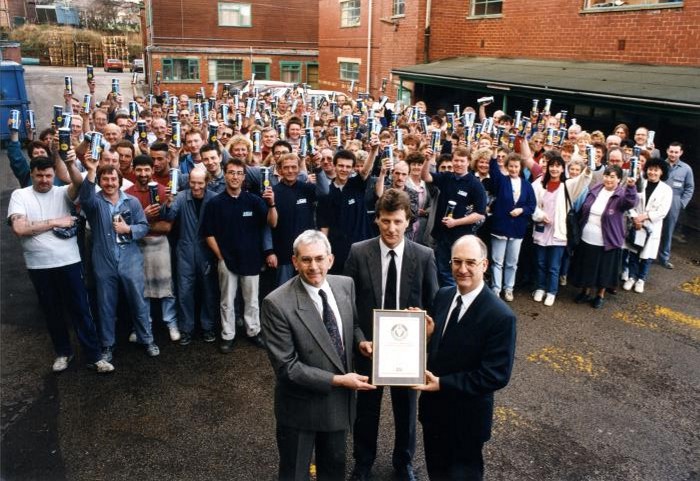
Barnsley employed about a third of the Slazenger factory workforce, with the rest working at Horbury. When it first opened, there were around 200 workers who made everything from crash helmets to shuttlecocks and hockey sticks. At Horbury, they made all the leather sporting equipment such as boxing gloves and the footballs used in the 1966 World Cup final.
Down the line, Barnsley operations would shift so they focused primarily on tennis balls, with another 600 staff enlisted to cope with demand of the unique Wimbledon contact.
Forget the Bryan brother, Williams sisters, or The Woodies; Slazenger and Wimbledon are tennis’ most iconic double act. The partnership is the longest running in sporting history, with Slazenger supplying the tennis balls to the tournament since 1902. Barnsley employees made all the balls for the Wimbledon tournament, which was often more than 50,000 balls for the two-week duration – and the company did it all for free. Slazenger’s directors knew having their brand name at the world’s most prestigious tennis tournament was the best marketing tool they could deploy and riding on Wimbledon’s coattails fuelled worldwide sales.
Due to the high level of output, workers at the Barnsley Slazenger factory were mainly employed on piece work contracts, where staff would be paid a fixed rate per unit they made. This attracted lots of women to the job as they found they could earn more than the standard hourly rate for women at that time, which was substantially less than their male counterparts, giving them the freedom to earn enough to support themselves if they worked hard or fast enough. One woman was noted to have produced enough tennis balls to earn the equivalent of £10 per hour, or around £30 an hour at today’s rate.
Work was hard and physical, with cuts, scuffs and blisters the norm, especially before the 1970s when every aspect was done by hand, from rolling the rubber, felting the ball, gluing on the white lines and cutting off the excess. The Slazenger panther was a hallmark of quality and their products were praised for their superiority; unlike other manufacturers, Slazenger used moulds to create a perfectly round ball and filled them with nitrogen gas so they’d last ten-times longer.

When Wimbledon’s Open Era started in 1968 and professional players were allowed to participate, tennis became a much more mainstream sport. The big hitters got bigger and the balls took greater punishment, meaning they had to withstand the improved quality of play.
The factory made tens of thousands of tennis balls every day, and each one had to be perfect. The factory employed teams of testers whose job was to bounce each ball and record the measurements for the utmost accuracy. If just one ball was defective, it would cause serious problems for the brand. Some workers can remember the day when hordes of people swarmed the factory after a ball used by John McEnroe burst on court, with the big bosses coming to learn from the expertise of the Barnsley factory workers to find out what had gone wrong.
But despite the high workload and pressure of perfection, conditions weren’t tough or sweatshop-like. Most workers loved their time at Slazenger because of the camaraderie. The workforce became like a big family and workers often spent more time with their colleagues than with their own families at home. If anyone had a problem, they all rallied round.
The company also gave a lot back to its community. Management put on presentations and awards every year, paid for pensioners’ parties at holidays like Easter and Christmas, gave equipment to schools, and donated to raffles and charities. And they always had the biggest float at the Mayor’s Parade.
Each year, staff were chosen to go on an all expenses paid trip to Wimbledon and given £30 spending money. Employees also had real routes for progression throughout the company via college courses. A worker could go from a ball tester to head engineer or works’ manager if they stayed with the company, which is why a lot of employees worked at Slazenger for decades.
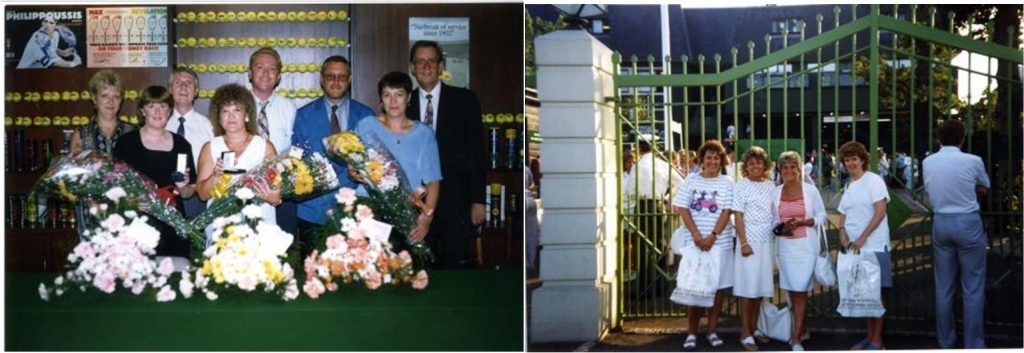
Sadly, globalisation and not reacting quick enough to technological advancements led to the downfall of Slazenger’s UK operations. The Horbury site closed in the late ‘80s, with the company shutting the doors to its Doncaster Road factory in 2002 when it was bought by Sports Direct. All production moved to a state-of-the-art factory in the Bataan region in the Philippines where labour was cheaper and the rubber plantations closer.
While the Barnsley Serves the World exhibition focuses on the strong industrial heritage of Slazenger, it also gives a nod to the Filipino culture of its present. The team at Experience Barnsley have reached out to the current factory management to highlight the pride in their shared heritage. They have sent gifts including a photobook, letter from the Mayor of Barnsley and a poem written by Ian McMillan which have both been translated into Tagalog. Ian’s sonnet, called Over the Net and Over the Sea, has been inspired by the rhythm and sounds of his time spent working as a dipper at Slazenger and includes some Filipino slang.
The poem and letter will also be on display at the exhibition in Barnsley where a host of ace activities are planned, such as juggling tennis balls, making musical instruments out of tennis equipment, and attempting to set some tennis-themed world records.
At the launch day on Saturday 9th April, the Experience Barnsley team will be serving up some Wimbledon-inspired refreshments such as Pimm’s and lemonade and strawberries and cream. Ian McMillan will be giving a performance of his poem, and you may spot a few tennis star lookalikes walking round the museum. You cannot be serious?
On Thursday 28th April, there will be a poetry workshop called Talking Balls with Ian McMillan where the Bard of Barnsley invites the public to make a racquet and bounce words around to make poems up about their memories of the Slazenger factory. The event is free but you need to book your place via Eventbrite.
Barnsley Serves the World is a free, family-friendly exhibition that runs from Saturday 9 April to Saturday 8 October at Experience Barnsley Museum, based in the town hall. For more information, visit www.experience-barnsley.com
